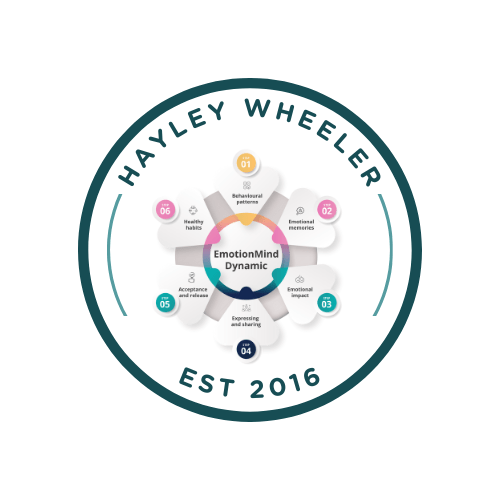Default mode – your autopilot setting
Your default mode is the automatic learned response and actions you take when faced with a trigger. Your body and mind go into default mode when it feels threatened. As your mind is already reacting to the situation, your actions may feel out of your control. And while anxiety is in control, this may be true. The intensity of the emotional reactions that happen determine the intensity of the behavioural response. The feeling of lack of control over these emotions can be challenged; in many cases, your beliefs about your abilities may not reflect the truth about your abilities. By overestimating the threat, and underestimating how you can control your responses, can lead to feelings of anxiety. When you perceive a threat, the effects you experience can be lessened by processing your thoughts. Thinking about your thoughts, changing the way you think about your thoughts, can reduce the effects on your body caused by events that trigger your anxiety. Armed with the right strategies, you can identify what your default mode is in response to threats, and replace these negative thoughts with more positive thoughts.
With blame, self blame and self destruct often front and centre, this can easily become a pattern. We are socialised to self punish for mistakes, failures and not meeting the expectations of others from a very young age. While blame or self blame may feel ‘right’ at the time, it rarely leaves you feeling good long term. It destroys any foundation to make change. As you hide behind ‘reasons’ – often ones that are felt to be out of your control – therefore you do not need to take action. But no action means no change. It’s hard, your thoughts have convinced you that there is no other way. There is another one, two or three or more ways, there are people who love you, things you don’t know yet that will help you once you’ve learned them.
When you live with anxiety and depression you come to believe you have no power, no control and no choices. You accept this as the truth. You feel there are no options therefore you stop making decisions because any kind of choice seems limited, worthless, hard work and generally does not pay off. You may have tried all the tricks you have in your toolbox to no avail, you may have sought help and without change, your perception becomes narrowed and you accept – this is it. Your perception is skewed by the negative thoughts. You find yourself trapped and any options, choice or the ability to make informed decisions are impaired. You have moments where you feel stronger, it might be a good day, so you set about trying to implement change, the options become clear, the actions you need to take are evident. As you begin to take those little steps, a wave of anxiety or depression hits and you are back at rock bottom. This cycle may happen a number of times, before you come to believe you cannot change it and it gets hard so you give up even trying. You keep and eye and an ear out for the latest advice or guidance and may dip your toe in, all the while waiting for it to fail and when it does, you feel relieved, sad and confused. All this effort is tiring, and results in you falling back into your comfort zone.
Accountability is key to taking back control of negative thoughts.
Accountability means understanding what you’ve been through, accepting how things are for today, what you want in the future and taking action towards your future.Taking action includes learning new information and skills, challenging and changing your perception. With self kindness and self compassion consider all the things that have made you who you are, change the things you want to change and keep the things you want to keep. Recognising the thoughts and disrupting them, while making new choice about how you think, is very empowering. As you learn more about your ‘glitch’ and how it affects you, you will start to take control little by little. There will be a situation that catches you out every so often. But in learning about your glitch, you’ll be more powerful in how you deal with it and what you learn from each situation. You can quiet the voice of anxiety and make your own choices. You can widen your comfort zone.
Being accountable is about avoiding blame.
When I operate in blame, I am not allowing myself the opportunity to develop and be in control of my life.
Being accountable is taking responsibility – for all of my actions, behaviours, thoughts, choices and life.
I am responsible for making life work for me.
Only I can change things.
I worked with a lady who used her anxiety to fuel her passion and commitment to her business, it was her drive to do better and be a good business woman. Great, you might think. But the other side of it was low self esteem, not able to fully connect with people, keeping busy and exhausted, not enjoying life one bit. Her focus was on how great it was that she could use her anxiety to run her business, ignoring all the personal struggles to keep her going until she became so overwhelmed she needed help to feel happy and living instead of existing. Emotional empowerment means building resiliency, reducing anxious feelings and worries. Learning new life skills, and developing your self knowledge superpower – you can find your version of happiness. Find out more about EmotionMind Dynamic – a coaching programme that supports your self development journey.
